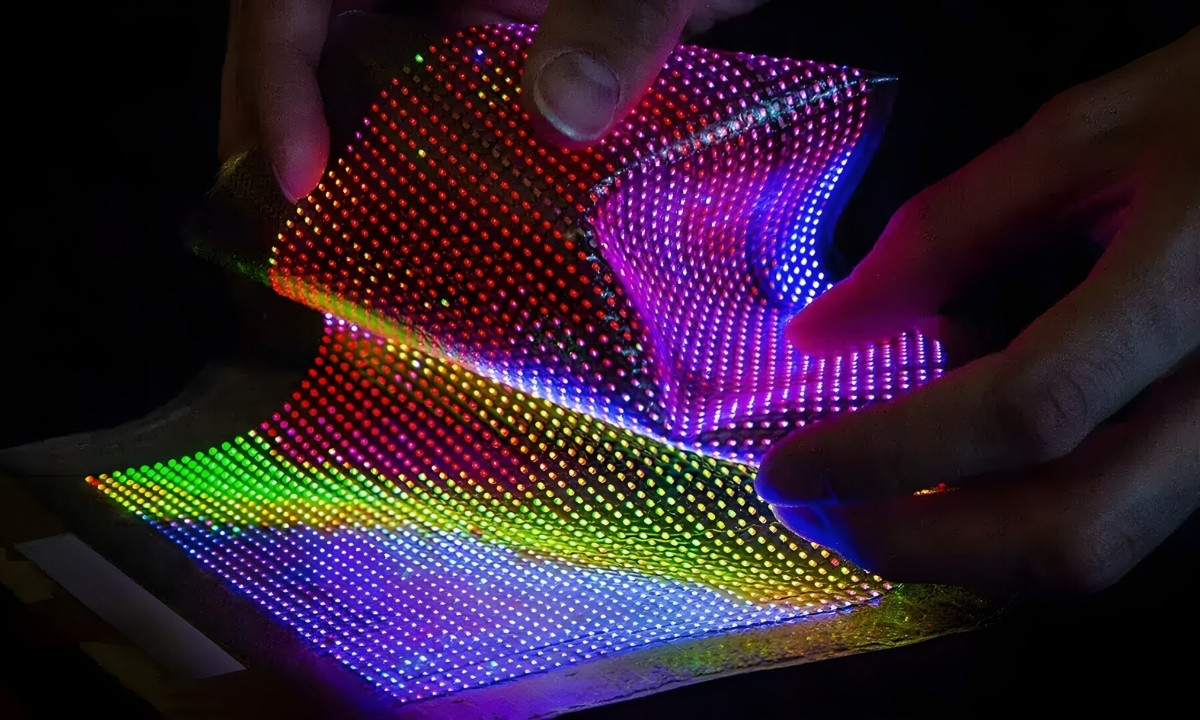
E-textiles, also known as electronic textiles or smart fabrics, blend traditional fabric with cutting-edge technology. These innovative materials can sense, react, and adapt to environmental conditions or stimuli. E-textiles are revolutionizing industries from fashion to healthcare, offering new possibilities for wearable tech. Imagine clothes that monitor your heart rate, jackets that heat up in cold weather, or even fabrics that change color based on your mood. E-textiles are not just futuristic concepts; they are becoming a part of our everyday lives. Curious about how these smart fabrics work and their potential applications? Here are 25 fascinating facts about e-textiles that will pique your interest and expand your understanding of this exciting field.
What Are E-textiles?
E-textiles, also known as electronic textiles, are fabrics embedded with digital components like sensors, batteries, and microcontrollers. These smart fabrics can sense, react, and adapt to environmental conditions or stimuli from the user. Let's dive into some fascinating facts about e-textiles.
- E-textiles combine traditional fabric with modern technology, creating a new category of smart clothing.
- They can monitor vital signs such as heart rate, temperature, and even hydration levels.
- E-textiles are used in sportswear to track athletic performance and provide real-time feedback.
- Some e-textiles can change color or pattern based on environmental conditions or user input.
- They can be integrated into everyday clothing, making technology more seamless and less obtrusive.
History of E-textiles
The concept of e-textiles isn't as new as you might think. It has roots in early innovations that combined textiles with technology.
- The first e-textiles were developed in the 1960s for military applications.
- NASA used early forms of e-textiles in spacesuits to monitor astronauts' health.
- In the 1990s, researchers began exploring e-textiles for medical and consumer applications.
- The term "e-textile" was coined in the early 2000s as the technology became more mainstream.
- Today, e-textiles are used in a variety of fields, from healthcare to fashion.
Applications in Healthcare
E-textiles have made significant strides in the healthcare industry, offering new ways to monitor and improve patient care.
- Smart bandages made from e-textiles can monitor wound healing and release medication as needed.
- E-textile garments can track patients' vital signs and alert healthcare providers to any abnormalities.
- They are used in rehabilitation to monitor muscle activity and provide feedback to patients.
- E-textiles can help manage chronic conditions like diabetes by continuously monitoring glucose levels.
- They offer a non-invasive way to monitor elderly patients, ensuring their safety and well-being.
Fashion and E-textiles
Fashion designers are increasingly incorporating e-textiles into their collections, blending style with functionality.
- Some designers use e-textiles to create garments that light up or change color.
- E-textiles can be used to create interactive clothing that responds to touch or movement.
- They allow for the creation of custom-fit garments by using sensors to measure the wearer's body.
- E-textiles can be used to create clothing that adapts to different weather conditions, such as heating up in cold weather.
- They offer endless possibilities for innovation in fashion, from high-tech couture to everyday wear.
Environmental Impact
E-textiles also have the potential to contribute to sustainability efforts in the fashion industry.
- They can be used to create clothing that lasts longer and requires less frequent washing.
- E-textiles can help reduce waste by enabling the creation of garments that can be easily repaired or updated.
- Some e-textiles are made from recycled materials, contributing to a circular economy.
- They can be used to create clothing that monitors environmental conditions, helping to raise awareness about climate change.
- E-textiles offer a way to integrate technology into clothing without sacrificing sustainability.
The Future of E-Textiles
E-textiles are changing how we think about clothing and technology. From smart fabrics that monitor health to wearable tech that enhances athletic performance, these innovations are making waves. Imagine a shirt that tracks your heart rate or a jacket that charges your phone. These aren't just ideas; they're becoming reality.
E-textiles are also eco-friendly. Many are made from recycled materials, reducing waste and promoting sustainability. As technology advances, expect even more exciting developments in this field.
So, whether you're a tech enthusiast or just curious about the future of fashion, keep an eye on e-textiles. They're not just a trend; they're a glimpse into the future of how we live and interact with the world around us.
Was this page helpful?
Our commitment to delivering trustworthy and engaging content is at the heart of what we do. Each fact on our site is contributed by real users like you, bringing a wealth of diverse insights and information. To ensure the highest standards of accuracy and reliability, our dedicated editors meticulously review each submission. This process guarantees that the facts we share are not only fascinating but also credible. Trust in our commitment to quality and authenticity as you explore and learn with us.
